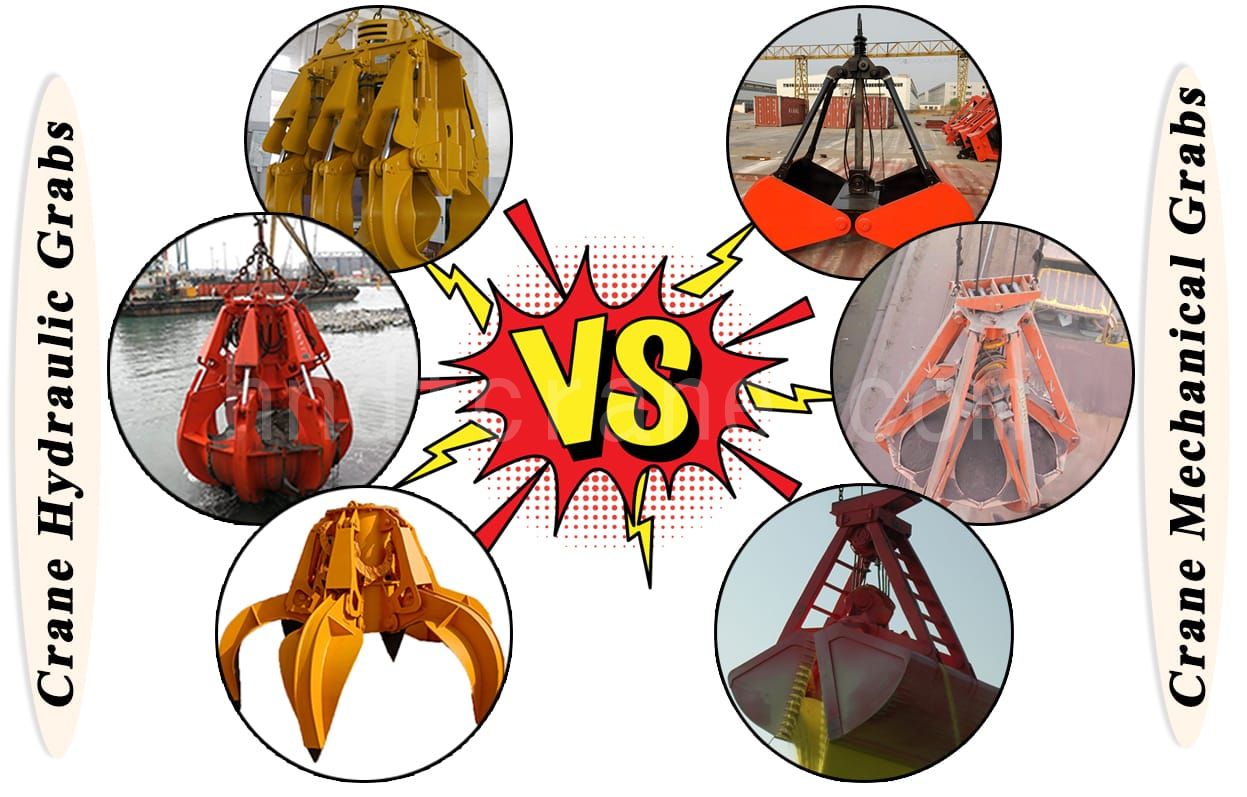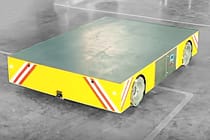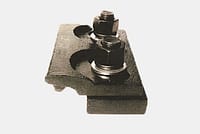Garras mecânicas vs. garras hidráulicas para ponte rolante: qual se adapta melhor às suas necessidades?
Índice

Qual é a diferença entre garras mecânicas e garras hidráulicas?Em termos de movimentação de materiais, escolher a garra certa pode afetar significativamente a eficiência e a produtividade.Os dois tipos comuns de garras usadas em guindastes são a garra mecânica e a garra hidráulica.Vamos explorar suas diferenças e entender quando escolher cada tipo.
Primeiro, vamos dar uma olhada no que é uma garra hidráulica e uma garra mecânica:
Classificação
Garras hidráulicas para ponte rolante
Garras eletro-hidráulicas tipo casca de laranja
Garras eletro-hidráulicas tipo concha
Garras retangulares eletro-hidráulicas
Caçamba Hidráulica de Nariz Redondo
Princípio de funcionamento
Garras hidráulicas para ponte rolante
Um conjunto de mecanismos de elevação, a garra hidráulica é instalada sob o gancho usando um gancho, que é fácil de desmontar, e a ação telescópica do cilindro hidráulico completa a abertura e o fechamento da caçamba.
Ele tem um motor, uma estação de bombeamento hidráulico e uma válvula de controle, que é acionada por uma fonte de alimentação externa para abrir e fechar.
As garras hidráulicas são conectadas ao circuito hidráulico do guindaste.
O operador pode controlar a elevação, abertura e fechamento, transferência e outras ações da garra hidráulica na sala de controle.
Ampliar imagem: 1 mechanism","alt":"1 mechanism"}" data-wp-interactive="core/image" class="wp-block-image size-full wp-lightbox-container">
Garras mecânicas para ponte rolante
Ele precisa ser equipado com 2 conjuntos de mecanismos de elevação para abrir e fechar as garras mecânicas através do carretel.
As garras mecânicas dependem de bielas mecânicas, polias e alavancas para a ação de agarrar
Operado por força física direta, ele consiste em dois ou mais braços articulados com bordas afiadas ou serrilhadas, semelhantes à mandíbula de uma criatura, que podem prender firmemente o material.
Não é necessária energia hidráulica ou conexão elétrica. O operador controla manualmente o movimento da garra mecânica.
Ampliar imagem","alt":""}" data-wp-interactive="core/image" class="wp-block-image size-full wp-lightbox-container">
Aplicativo
Garras hidráulicas para ponte rolante
Tratamento de resíduos domésticos:
Os guindastes de garra usados no descarte de resíduos em projetos de incineração de resíduos domésticos e geração de energia coletam principalmente resíduos domésticos.
Este é um produto inteligente que pode realizar operações autônomas.
Sucata de aço e pedras grandes:
Em pátios de sucata e fábricas de processamento de pedras, materiais de vários formatos e tamanhos podem ser controlados com precisão e processados com eficiência.
Bateria velha:
É mais adequado para operação fina e precisão, e reduz o risco de danos à bateria.
Indústria de processamento de alimentos:
Pegue picles, picles e vinícolas para fazer cerveja.
O aço inoxidável é geralmente usado para reduzir a poluição.
Descontaminação do rio:
É muito adequado para tarefas de limpeza fina, proporcionando controle preciso para remover detritos sem perturbar muito o leito do rio.
Indústria leve:
A apreensão de plásticos é muito adequada para processamento de alta precisão de plásticos, adequada para classificação e operação fina.
Ampliar imagem","alt":""}" data-wp-interactive="core/image" class="wp-block-image size-full wp-lightbox-container">
Garras mecânicas para ponte rolante
Tratamento e classificação de resíduos:
Ganchos mecânicos são bons para manusear materiais a granel, como toras, sucata, pedras e detritos.
As instalações de gerenciamento de resíduos usam caçambas para separar e transferir materiais recicláveis, resíduos verdes e resíduos de construção.
Desmontar e desconstruir:
Durante o projeto de demolição, a garra mecânica remove a estrutura do edifício agarrando e puxando o material.
A remoção de concreto, vigas de aço e outros componentes minimiza a necessidade de mão de obra e encurta o cronograma do projeto.
Carregamento e descarregamento:
A garra pode manusear com eficiência cargas a granel, como carvão, grãos e agregados.
Operações florestais:
Carregue e descarregue toras com eficiência para auxiliar no corte e transporte de madeira.
Eles mantêm os operadores longe de árvores caídas e troncos pesados, melhorando assim a segurança.
Ampliar imagem","alt":""}" data-wp-interactive="core/image" class="wp-block-image size-full wp-lightbox-container">
Manutenção
Garras hidráulicas para ponte rolante
O sistema hidráulico tem muitos mecanismos e a manutenção é mais trabalhosa do que as garras mecânicas.
O sistema hidráulico é mais complexo e o custo de manutenção é maior, além de ser propenso a entrada de ar e outras falhas durante o uso.
Garras mecânicas para ponte rolante
Comparados com garras hidráulicas, garras mecânicas são simples de manter e duráveis. Garras mecânicas geralmente são apenas uma questão de desgaste do cabo de aço. Naquele momento, apenas o cabo de aço precisa ser substituído.
As garras hidráulicas do guindaste são controladas por um sistema hidráulico, que tem as vantagens de alta precisão e operação flexível. É adequado para carregar e descarregar cargas a granel e ocasiões que exigem operação fina, mas sua estrutura é complexa e o custo de manutenção é alto. As garras mecânicas dependem do controle de cabo de aço, que é adequado para manusear grandes peças de materiais e operações pesadas em ambientes hostis. A estrutura é relativamente simples e o custo de manutenção é baixo. Ao escolher, o tipo de garra a ser usada deve ser determinado de acordo com os requisitos de operação, requisitos de precisão e ambiente operacional.
Como escolher a garra certa
Esclareça seu propósito:Antes de se aprofundar nas opções, esclareça suas necessidades específicas. Pergunte a si mesmo:
- Com quais materiais você quer lidar? (Toras, sucata, pedra, etc.)
- Quais tarefas a garra executará? (Carregamento, classificação, desmontagem, etc.)
- A que tipo de dispositivo ele será conectado? (Ponte rolante, ponte rolante)
- Qual é a gravidade específica do material que você pega? O número de cubos da garra?
- De acordo com as características do material a ser agarrado, o agarrador é geralmente dividido em quatro tipos básicos: leve, médio, pesado e superpesado.
| O tipo de material a ser agarrado | Pegue o material | Capacidade de peso (t/m³) |
| Luz | Coque, escória, grãos, batatas, cal antracita de média qualidade, cimento, solo, cascalho, argila, tijolos quebrados, etc. | 0.5~1.2 |
| Médio | Turfa, grandes pedaços de carvão antracito, carvão compactado, argila, calcário, cascalho, sal, brita, tijolos, bauxita, flocos de óxido de ferro, cimento, areia e tijolos em água, etc. | 1.2~2.0 |
| Pesado | Calcário, argila pesada, minérios pequenos e médios, rocha dura, óxido de ferro em forma de barra, minério de ferro, pó de concentrado de chumbo, etc. | 2.0~2.6 |
| Sobrepeso | Minérios grandes, minério de manganês grande, pó de minério de chumbo aglomerado sedimentar, etc. | 2.6~3.3 |
- Qual é a tonelagem do seu guindaste equipado com uma garra?
Compatibilidade de acessórios: Certifique-se de que o gancho seja compatível com o equipamento existente.
Considerações orçamentárias: A faixa de preço do grab é diferente. Equilibre seu orçamento com base na função e durabilidade do grab.
Comentários e sugestões: Pesquise online, leia avaliações de usuários e busque sugestões de colegas do setor.
Vá até o fabricante do guindaste para inspeção e testes no local antes de comprar: teste o grab em condições reais o máximo possível. Avalie seu desempenho, facilidade de uso e funcionalidade geral.
Tenha em mente que escolher a garra certa requer um equilíbrio entre funcionalidade, segurança e custo. Ao considerar esses fatores, você encontrará a garra perfeita que pode aumentar a produtividade e garantir uma operação suave.
Escolha as garras hidráulicas e mecânicas adequadas de acordo com as necessidades dos diferentes projetos
Usamos dois projetos anteriores da Dafangcrane para ajudar você a diferenciar a seleção.
Caso 1 - Garras hidráulicas são usadas em pontes rolantes
Ampliar imagem","alt":""}" data-wp-interactive="core/image" class="wp-block-image size-full wp-lightbox-container">
- Tipo de garra: Garras eletro-hidráulicas tipo casca de laranja , volume de captura 4m3*A6
- Tipo de projeto: Usado em projetos de geração de energia residual, principalmente para lidar com a mistura, despejo, manuseio, mistura, etc. de resíduos domésticos para garantir uma composição uniforme dos resíduos. Lida com 600t de lixo por dia; a operação do equipamento é superior a 8000h.
- Características do material:
- O teor de umidade dos resíduos domésticos é de 45%~65%
- A densidade do lixo na garra é de 0,6~0,9t/m3
- Capacidade de lixo (no compartimento de lixo) 0,3~0,6t/m3
- Ângulo de acumulação estática 65 graus
- Referência de preço: As garras hidráulicas são mais inteligentes e mais complexas do que as garras mecânicas, então o preço é 4,1 vezes maior que o da garra mecânica.
- Por que escolher garras hidráulicas:
Diversidade de materiais: A composição dos resíduos domésticos é complexa, o teor de umidade é alto e a diversidade de materiais é rica, o que exige uma garra flexível para processamento. As garras hidráulicas são multifuncionais e podem manusear efetivamente materiais de diferentes tipos e estados.
Compreendendo precisão e eficiência: As garras hidráulicas podem controlar com precisão a força e o ângulo de preensão e se adaptar às operações precisas necessárias no processo de descarte de lixo, como misturar, despejar, manusear e mexer, para garantir uma composição uniforme do lixo.
Forte capacidade de processamento: 600 toneladas de lixo são processadas por dia, e o equipamento funciona por até 8.000 horas. A durabilidade e o desempenho eficiente da garra hidráulica atendem às necessidades de operações de alta intensidade.
Segurança e estabilidade: As garras hidráulicas operam suavemente, o que pode reduzir o risco de derramamento de material e operação, melhorar a segurança do trabalho e é adequado para manusear resíduos domésticos com alto teor de umidade e grandes mudanças de densidade.
Adapte-se a ambientes operacionais complexos: As garras hidráulicas podem manter uma operação eficiente em um ambiente de trabalho variável, especialmente adequadas para descarte de lixo, que exige operação frequente e resposta flexível a vários materiais.
Operações de longo prazo e alta frequência: A durabilidade e a estabilidade da garra hidráulica permitem que ela lide com operações de longo prazo e alta frequência, reduza o tempo de inatividade e melhore a eficiência geral do trabalho.
Em resumo, a escolha da garra hidráulica é baseada em suas considerações abrangentes de flexibilidade, alta eficiência, durabilidade e segurança, que podem atender efetivamente às necessidades operacionais complexas e de alta intensidade de projetos de geração de energia residual.
Caso 2 - Garras mecânicas são usadas em pontes rolantes
Ampliar imagem","alt":""}" data-wp-interactive="core/image" class="wp-block-image size-full wp-lightbox-container">
- Tipo de garra: Garras mecânicas de concha de quatro cordas para balde , volume de captura 4m3
- Gravidade específica do material: 2t/m3
- Tipo de projeto: Usado em empresas de materiais magnéticos de pó metálico, o cabo de aço adota o tipo de aço inoxidável resistente à temperatura.
- Referência de preço: A garra mecânica tem uma estrutura simples e custa cerca de 24.39% da garra hidráulica, tornando-a a melhor escolha se você tem um orçamento limitado
- Por que escolher uma garra mecânica:
Boa vedação: materiais como pó metálico são fáceis de espalhar durante o manuseio, e as garras mecânicas têm uma estrutura simples e boa vedação, o que pode efetivamente evitar que materiais derramem e melhorar a limpeza e a segurança das operações.
Custo-efetividade: Os custos de aquisição e manutenção de garras mecânicas são baixos e elas são adequadas para operações com orçamentos limitados e uso de longo prazo e alta frequência.
Durabilidade: O cabo de aço adota aço inoxidável resistente à temperatura, adequado para manuseio de materiais como pós metálicos que têm altos requisitos de temperatura e resistência à corrosão.
Ambiente aplicável: Para pó metálico em estado seco, a força de preensão e a estabilidade das garras mecânicas são suficientes para atender às necessidades, e a operação é simples e fácil de manter.
Eficiência no trabalho: A garra mecânica pode concluir de forma rápida e eficiente a coleta e o manuseio de materiais, melhorar a eficiência geral do trabalho e é adequada para as necessidades de operação rápida de linhas de produção industrial.
Em resumo, a escolha da garra mecânica é baseada em suas considerações abrangentes de fechamento, custo-benefício, durabilidade, ambiente aplicável e eficiência operacional, o que pode atender efetivamente às necessidades reais das empresas de materiais magnéticos de pó metálico.
Comparação abrangente
Recomenda-se escolher garras mecânicas nos seguintes casos:
- Ambiente operacional severo: Em ambientes severos com muita poeira e umidade, as garras mecânicas são mais confiáveis do que as hidráulicas e são menos afetadas pelo impacto ambiental.
- Simplicidade e custo-benefício são prioridades: as garras mecânicas têm uma estrutura simples e baixos custos de manutenção, o que é adequado para projetos com orçamentos limitados.
- Fácil manutenção: As garras mecânicas têm uma estrutura simples e uma pequena carga de trabalho de manutenção, o que pode reduzir o tempo de inatividade e melhorar a continuidade da operação.
- Equipamento disponível: Se o equipamento de elevação existente não tiver um sistema hidráulico, a garra mecânica pode ser usada diretamente sem modificações ou investimentos adicionais.
- Treinamento de operação: a operação da garra mecânica é relativamente simples, o custo do treinamento é baixo e é adequada para rápida implantação e uso.
É recomendável escolher garras hidráulicas nos seguintes casos:
- Quando é necessária uma força de preensão maior: as garras hidráulicas são flexíveis na operação, a força de preensão e o ângulo podem ser controlados com precisão, e a força de preensão é mais forte do que a das garras mecânicas.
- Você opera máquinas hidráulicas: se você já possui equipamentos hidráulicos, as garras hidráulicas podem ser integradas diretamente para melhorar a eficiência operacional.
- O manuseio seguro e eficiente de materiais é essencial: as garras hidráulicas operam suavemente, reduzem danos ao material e riscos operacionais e melhoram a segurança e a eficiência do trabalho.
- Há requisitos de automação: a garra hidráulica pode ser integrada ao sistema de controle de automação para obter operações mais inteligentes e melhorar a eficiência geral da produção.
Em resumo, garras mecânicas e hidráulicas têm suas vantagens no manuseio de materiais. Avalie seus requisitos específicos, considere o equipamento disponível e faça uma escolha informada. Não importa se você escolhe a robustez e a simplicidade das garras mecânicas ou a precisão das garras hidráulicas, lembre-se de que a garra certa pode aumentar a produtividade e garantir uma operação suave.
A Dafang Crane oferece uma ampla gama de garras hidráulicas e mecânicas, incluindo vários tipos de garras automatizadas projetadas para atender a diversas necessidades. Quer você esteja procurando soluções eficientes para levantamento pesado ou aplicações especializadas, temos o equipamento certo para você. Clique no link da imagem abaixo para explorar nossa seleção completa e encontrar a garra perfeita para as necessidades do seu negócio.
15 caçambas de garra diferentes para aplicações de guindaste.

Envie sua pergunta
- Email: sales@hndfcrane.com
- Whatsapp: +86 191 3738 6654
- Telegrama: +86 191 3738 6654
- Tel: +86-373-581 8299
- Fax: +86-373-215 7000
- Adicionar: Distrito Industrial de Changnao, cidade de Xinxiang, província de Henan, China
 WeChat
WeChat












































































































